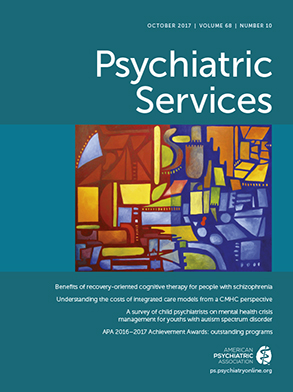First-Episode Psychosis and the Criminal Justice System: Using a Sequential Intercept Framework to Highlight Risks and Opportunities
Abstract
Violence Risk and First-Episode Psychosis
Early Psychosis and the Criminal Justice System
Criminal Justice System Interception for Clinical Teams
| Intercept point | Examples |
|---|---|
| Initial police contact (prebooking diversion) | Mobile crisis clinicians, crisis intervention teams |
| Postarrest initial detention and hearings | Mental health jail diversion programs |
| After initial hearings (jails, courts, forensic evaluations) | Specialized courts (mental health courts, drug courts), evaluations for competency to stand trial |
| Community reentry after incarceration | Mental health “in-reach” programs into correctional settings |
| Community corrections and support | Specialized mental health probation and parole programs |
Prebooking Diversion.
Jail Diversion Programs.
Mental Health Courts.
Conclusions
References
Information & Authors
Information
Published In

Cover: Birmingham Breakdown #2, by Craig Moran, 2010. Oil on canvas. Collection of the artist, Washington, D.C.
History
Keywords
Authors
Funding Information
Metrics & Citations
Metrics
Citations
Export Citations
If you have the appropriate software installed, you can download article citation data to the citation manager of your choice. Simply select your manager software from the list below and click Download.
For more information or tips please see 'Downloading to a citation manager' in the Help menu.
View Options
View options
PDF/EPUB
View PDF/EPUBLogin options
Already a subscriber? Access your subscription through your login credentials or your institution for full access to this article.
Personal login Institutional Login Open Athens loginNot a subscriber?
PsychiatryOnline subscription options offer access to the DSM-5-TR® library, books, journals, CME, and patient resources. This all-in-one virtual library provides psychiatrists and mental health professionals with key resources for diagnosis, treatment, research, and professional development.
Need more help? PsychiatryOnline Customer Service may be reached by emailing [email protected] or by calling 800-368-5777 (in the U.S.) or 703-907-7322 (outside the U.S.).
